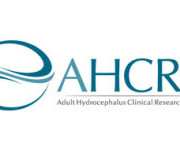Hydrocephalus and Disability Benefits
 Hydrocephalus is an abnormal accumulation of cerebrospinal fluid in the brain, which causes the ventricles to enlarge and the pressure inside the head to increase. There is no cure and the only treatment option requires brain surgery. Adults with hydrocephalus may develop symptoms of the condition slowly over time or may have a rapid onset of symptoms, which can include headaches, vision issues, vomiting, a loss of coordination and balance, fatigue, and problems with speech, memory, and thinking, as well as personality changes and impulse control issues. Anyone can develop hydrocephalus at any time from a brain injury, infection, tumor, or, for unknown reasons, as part of the aging process.
Hydrocephalus is an abnormal accumulation of cerebrospinal fluid in the brain, which causes the ventricles to enlarge and the pressure inside the head to increase. There is no cure and the only treatment option requires brain surgery. Adults with hydrocephalus may develop symptoms of the condition slowly over time or may have a rapid onset of symptoms, which can include headaches, vision issues, vomiting, a loss of coordination and balance, fatigue, and problems with speech, memory, and thinking, as well as personality changes and impulse control issues. Anyone can develop hydrocephalus at any time from a brain injury, infection, tumor, or, for unknown reasons, as part of the aging process.
Symptoms often diminish or disappear entirely once hydrocephalus is effectively treated for some individuals, but in many individuals symptoms can persist at varying degrees and intensities, and may be permanent in some cases. If your symptoms continue to prevent you from working, then you have a strong disability application, provided you have appropriate medical evidence to back up your claim.
Disability Benefit Programs
The Social Security Administration (SSA) provides support to disabled individuals through two separate programs:
Supplemental Security Income (SSI) benefits are available to disabled persons of any age. This program does not require you have a work record at all but it does have “financial-need” standards you must meet.
Social Security Disability Insurance (SSDI) benefits are paid to disabled workers that meet work history or work record requirements. To qualify you must have contributed to the Social Security fund through Social Security taxes during your employment history and dependent upon your age, you typically must have worked between 5 and 10 years. Younger applicants with hydrocephalus will not be expected to have worked as long as a 60-year-old applicant.
Matching a Blue Book Listing with Hydrocephalus
The SSA’s Blue Book is a manual of recognized disabilities. While there is no dedicated listing for hydrocephalus, you may qualify by showing through medical records that your symptoms are equal in severity to one of the following listed impairments:
Stroke or Traumatic Brain Injury – Section 11.04
Traumatic Brain Injury – Section 11.18
Epilepsy – Sections 11.02 and 11.03
Tumors of the head and neck – Section 13.02
Organic Mental Disorders – Section 12.02
This is not a complete list. Qualifying for benefits will hinge on finding a listing that you can meet in the Blue Book based on your own symptoms from hydrocephalus. To meet the SSA’s medical eligibility requirements, you must have:
a through medical history,
a formal diagnosis,
and detailed documentation of how your symptoms affect your daily life and abilities.
Your doctor is an invaluable resource. He or she can help you understand the Blue Book medical stipulations and can assist you in compiling required medical records.
Medically qualifying for children is different than qualifying for adults. Hydrocephalus in children is listed in the Blue Book, in Section 111.00. Your child will be able to qualify if he or she has non-compensated hydrocephalus. The hydrocephalus must also cause intellectual or motor delays.
Qualifying Under a Medical Vocational Allowance
If you’re unable to match a listed condition, then you must be able to show your everyday abilities are severely compromised by your symptoms, including things like cooking, cleaning, shopping, communicating with others, or interacting socially. The SSA will conduct a “residual functional capacity” or RFC evaluation that looks at your physical and mental limitations.
If the RFC shows:
you are not able to work in any job for which you already possess the training and skills necessary,
AND
you cannot reasonably be trained for a new job, given your education level, training, work history, and your physical and mental limitations, then you will be granted disability benefits through a medical vocational allowance. Your doctor can download an RFC evaluation online and fill it out for you.
Applying for Benefits
The SSI and SSDI programs require separate applications. The SSDI application can be completed online, but the SSI application must be filled out for you by an SSA representative, using the details you provide during your application interview. Visit the SSA’s website to start your online application, or call 1-800-772-1213 to schedule an appointment at the closest SSA office.
This article was provided by Social Security Disability Help. For any additional information, please feel free to email them at help@disability-benefits-help.org.










